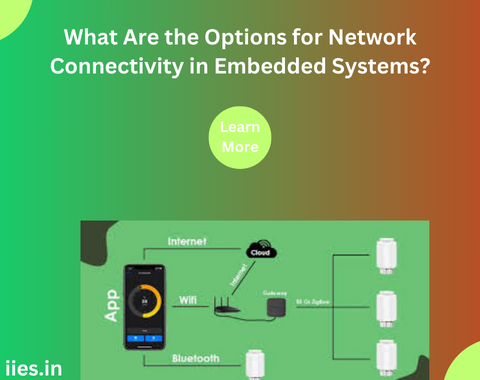These systems are commonly found in various applications, such as consumer electronics, automotive systems, medical devices, and industrial machinery. Their compact size, low power consumption, and task-specific nature make them ideal for applications where a full-fledged computer would be impractical or unnecessary.
The Evolution of Embedded Systems
Historically, embedded systems operated in isolation, functioning as standalone entities. However, the rapid advancement of technology and the rise of the Internet of Things (IoT) have prompted a paradigm shift. The demand for seamless connectivity and data exchange has led to the integration of networking capabilities into embedded systems.
Networking Embedded Systems
Connecting embedded systems to a network opens up a myriad of possibilities and challenges. Let’s explore some of the key aspects involved in this integration:
Communication Protocols:
Embedded systems must speak a common language to communicate effectively. Various communication protocols, such as MQTT (Message Queuing Telemetry Transport), CoAP (Constrained Application Protocol), and HTTP (Hypertext Transfer Protocol), are employed to facilitate communication between embedded devices and the network.
Wireless Connectivity:
Wireless communication plays a pivotal role in networking embedded systems. Technologies like Wi-Fi, Bluetooth, Zigbee, and LoRaWAN enable these devices to connect without the constraints of physical cables. The choice of wireless technology depends on factors such as range, power consumption, and data transfer rates.
Security Considerations:
As embedded systems become more interconnected, the need for robust security measures intensifies. These systems often handle sensitive data, and vulnerabilities could have serious consequences. Implementing encryption, authentication, and secure communication protocols is imperative to safeguard against potential threats.
Power Consumption:
Many embedded systems operate on limited power resources. Efficient power management is crucial when integrating these devices into a network. Technologies like Low Power Wide Area Networks (LPWAN) and power-efficient communication protocols help minimize energy consumption, extending the lifespan of battery-operated embedded systems.
Scalability and Interoperability:
The ability to scale a network of embedded systems and ensure interoperability among diverse devices is essential. Standardization efforts, such as those by the Open Connectivity Foundation (OCF) and the Thread Group, aim to create a unified ecosystem where devices from different manufacturers can seamlessly communicate with each other.
Benefits of Networking Embedded Systems
Real-time Monitoring and Control:
Networking embedded systems enables real-time monitoring and control of devices remotely. This is particularly advantageous in industrial settings, where machine performance can be monitored and adjusted without physical intervention.
Data Aggregation and Analysis:
Connected embedded systems contribute to a vast pool of data that can be analyzed for insights. This data-driven approach allows businesses to make informed decisions, optimize processes, and enhance overall efficiency.
Remote Software Updates:
Network connectivity facilitates remote software updates for embedded systems. This is crucial for addressing security vulnerabilities, adding new features, and ensuring that devices remain up-to-date with the latest advancements.
Challenges and Considerations
Security Risks:
The interconnected nature of embedded systems introduces security risks. Unauthorized access, data breaches, and other cyber threats pose significant challenges. Robust security measures, regular updates, and adherence to best practices are essential to mitigate these risks.
Resource Constraints:
Embedded systems often operate with limited resources, including processing power and memory. Balancing the need for networking capabilities with resource constraints requires careful design and optimization to ensure optimal performance.
Standardization Issues:
The lack of standardized communication protocols and interoperability challenges can hinder the seamless integration of embedded systems into a network. Industry-wide efforts to establish common standards are essential for fostering a cohesive ecosystem.
Latency Concerns:
In applications where real-time responsiveness is critical, latency becomes a significant concern. Minimizing communication delays is essential, especially in sectors like healthcare and industrial automation where split-second decisions can have profound consequences.

